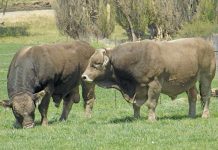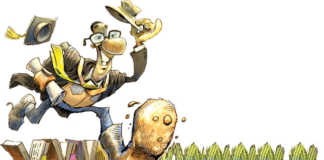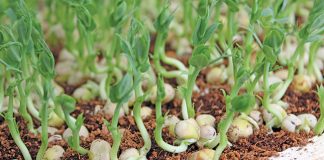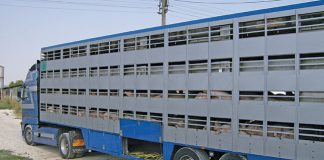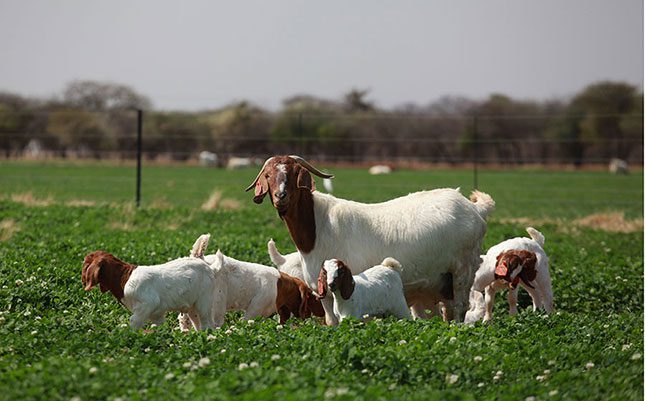
During my years of project management in communal farming areas I noted high conception (pregnancy) rates, but lamb and goat weaning rates were often very low (offspring reaching adulthood).
READ How to manage a lambing pen system effectively
Remember, if you have a number of ewes that lose offspring, these animals are essentially bringing in little or no yearly income for you (barring wool sheep that earn you some money via wool).
Basically, these animals have utilised resources such as labour time, medication, added feeding, and so forth, so they actually constitute a loss for you as the farmer.
In my experience, generally, sheep seem to be better mothers to newborn lambs than what goats are to their kids, although there are exceptions to the rule within the greater goat population.
It is for this reason that many goat farmers have dedicated smaller enclosures into which newborn kids and their mothers are placed for a few days.
This allows for a better bonding process, and such facilities allow you to assist the kid/s to suckle if the mother seems hesitant to allow them.
Goat ewes that keep pushing newborn kids away should be carefully but firmly held while the kid is latched to an udder nipple in order to allow it to drink colostrum.
The drinking of this thick, yellow milk is essential in the first hours of life because colostrum contains important antibodies that allow the kid to develop a strong immune system.
I have witnessed numerous cases of mothers suffering milk shortages and this often occurs due to nutritional shortfalls during the final few weeks before giving birth.
Pregnant mothers being run solely on poor-quality grass veld or dry, low-grade lucerne or grass bales will often struggle to produce sufficient milk, and drinking water shortages can exacerbate this problem.
Kids or lambs that don’t die due to this problem may become stunted due to a lack of milk and their weakened immune systems may expose them to opportunistic infections and even to greater stress from parasites that may not affect well-fed offspring as severely.
It is thus important that if farming in poor or very dry grazing conditions, you supplement pregnant mothers with orally dosed or injectable multivitamins and trace elements, and with added feeding that contains grain.
You can either utilise lamb and ewe pellets at a minimum rate of 500g (about one large jam tin) per ewe per day, or you can mix one part crushed maize or straight run with two parts good-quality lucerne daily – about two large jam tins daily per ewe.
This constitutes additional feeding to the grass that they will ordinarily consume daily. Remember that drinking water is essential and each ewe will require a minimum of between 7ℓ and 10ℓ of clean drinking water daily.
While older kids and lambs from about two to three weeks of age will start eating small amounts of feed, I always prefer giving these younger offspring the above-mentioned lucerne and maize combination rather than concentrated feeding that may be too rich for their tiny, tender stomachs.
From about six weeks of age, I usually start offering some pellets, but not too much in quantity because greedy feeders have been known to choke on pellets.
Vaccination and deworming
Further to vaccinating kids and lambs with a multispectrum vaccine at between three and four weeks of age (and administering a booster thereafter as per manufacturer instructions), kids and lambs should only receive their first deworming about seven to 10 days after this initial vaccination, because deworming unvaccinated offspring can bring about conditions like pulpy kidney.
READ Sheep farming: the best ways to reduce lamb losses
Putting unvaccinated young animals onto high-quality or nutrient-rich green feed can also cause diseases like pulpy kidney.
If you are kraaling your animals nightly, as is the case in many communal farming areas, you will need to dose your livestock more often than usual because internal parasites seem to thrive and are more easily transmitted in cramped environments when animals are living in close proximity to one another.
Young goat kids or lambs that are still drinking milk and not yet eating solid feeding can develop crusty and hard faecal blockages on the outer anus.
These crusts should be removed as often as possible in order to allow proper defecation (stomach working).
Shane Brody is involved in an outreach programme aimed at transferring skills
to communal farmers.





